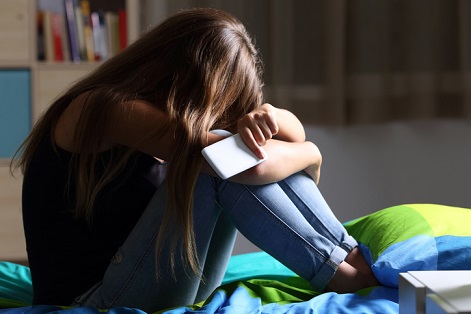
In today’s fast-paced, digital school environment, the 9am-3pm learning routine has given way a more dynamic model of ‘virtual classrooms’ and 24/7 learning.
However, while this shift presents opportunities for students to connect with their learning more easily and study in a flexible way, it may also be leading to higher levels of anxiety and depression.
Research shows that an estimated 3.1 million US adolescents aged 12 to 17 have reported experiencing metal health issues – a figure that is on the rise.
And this stress isn’t only confined to primary and secondary education.
As David Rosenberg, Professor of Psychiatry and Neuroscience, Wayne State University in Detroit, pointed out in The Conversation recently, one-in-five university students suffer from anxiety or depression.
In Australia, a record 24,055 young people aged 15-19 recently took part in Mission Australia’s Youth Survey 2017, which found that mental health issues topped the list of issues for the first time in the survey’s history.
Around one-third of young people (33.7%) identified mental health as a national concern, more than doubling since 2015 (14.9%).
So how should schools respond to this problem?
School counselors should set expectations for what types of accommodations students should expect, says Mandy Savitz-Romer, who is a senior lecturer at the Harvard Graduate School of Education (HGSE).
“Schools are increasingly designating safe, quiet spaces for students to retreat to when they are feeling overwhelmed,” she said.
“While this is a necessary support in many circumstances, counselors should also establish and communicate limits on how long each student can stay in these quiet rooms before she needs to return to class.”
Savitz-Romer said attending school and completing work needs to be the goal – not something to be avoided.
Mission Australia CEO, James Toomey, said schools can play an important role in ‘destigmatising’ mental health and encouraging young people to seek support when they need it.
“They can also help to develop knowledge and skills around mental health, by providing opportunities for young people to have discussions about difficult mental health issues, such as when it is ethical to break a friend’s trust, and to learn skills around navigating available support options for themselves or their friends,” Toomey told The Educator.
“We know from our annual Mission Australia Youth Survey that many young people facing challenges in their lives reach out to friends and family for support.”
Toomey said those family members and friends need to know how to navigate the bewildering variety of services and information sources that are available, and be provided with targeted information about ‘mental health first aid’ and other practical supports that exist.
“Schools can be an avenue for getting that information to the people who need it,” he said.


